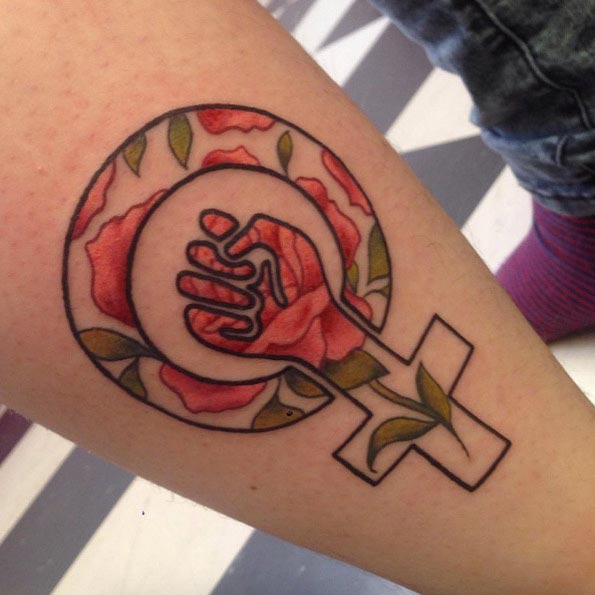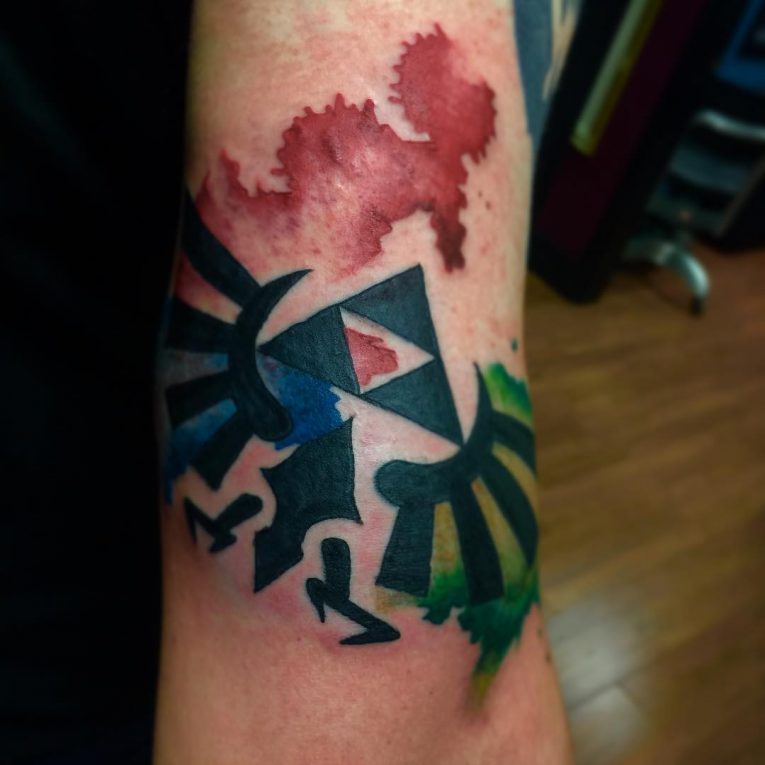

- #Power to the people tattoo how to#
- #Power to the people tattoo Patch#
- #Power to the people tattoo code#
A young girl is taken by faeries and turned into inanimate objects, meanwhile the parents mourn their child unknowing that the girl lives on as something different. While researching Irish folklore as a source for his art degree, Joe discovered the changeling metaphor that he found “so apt for transness”. The word ‘changeling’ is tattooed across the torso of zine and printmaker Joe Earthling. Significantly, tattoos have the power to intimately validate one’s identity. It’s not just outward displays of identity and pride that tattoos can inspire. “I love Mapplethorpe’s work and this image included a kink reference I really loved – if you’ve seen me flagging my yellow bandana this is no surprise!” It was their own desire to be tattooed with kinky queer imagery that kickstarted this distinctive sexy aesthetic – their most recent one being a Robert Mapplethorpe image. From cover designs from erotic mags like Honcho or On Our Backs to scenes of BDSM sex, Frankie’s explicit depictions of queer identity, desire and liberation take flagging to a beautifully bold extreme. “My queerness informs and directly correlates with the kinds of designs I produce, my ethics and practices when tattooing, and the type of clients who are interested in my work,” they say. “I just look down and there it is, I see it all the time.” For Harrow and Gideon, tattoos have allowed them to feel assured within their identities, so when they’re tattooing each other or clients, their spirits can be shared.Įxpressing queer sexual desire unapologetically, the work of Frankie draws from notable queer kink imagery and artwork, as well as LGBTQ+ icons. “Fighting back and forth between how you feel about your body and how society feels about your body, I think it was very affirming to have something on my dominant hand,” she says. Her first dyke tattoos, which she did herself, are Venus symbols on each thumb and the word ‘boi’ on her hand, which serves as a “self manifesto” to assure her identity as a non-conforming dyke.
#Power to the people tattoo how to#
Her fiancé Gideon, who taught her how to tattoo, stands nearly head-to-toe in an amalgamation of queer designs. “It’s not just how I dress or how I do my hair, it will always be a part of me.” As well as the nautical star, the dyke symbols featured in her flash will include the labrys – adopted by lesbians in the 1970s connected to the strength of the Ancient Greek Amazonian weapon – and the double Venus symbol.

“Being a lesbian is something I’m proud of, I’m happy to wear that on my sleeve for everyone to see,” she explains. Confidently claiming my sexuality, from then on I’ve been bonded to my lesbian identity, and have found the power to confidently say “I’m a lesbian” to anyone who asks what my tattoo means.įor Harrow, who has numerous queer tattoos herself, the designs symbolise a celebration of lesbianism. As a femme lesbian, frustrated with being perceived as straight, this year I had a pair of scissors tattooed by my friend and dyke-centred tattoo artist, Harrow. Today, queer tattoos have become an outlet to outwardly express and connect with our sexuality. Despite this, Buffalo police soon began recognising the symbol and recording names. Butches and femmes alike would get the star inked, often on their wrists so it was easily covered by a watch to avoid being identified. Meanwhile, at the same time across the country in Buffalo, New York, Dirty Dick’s tattoo parlour on Chippewa Street became the place for lesbians to receive a blue nautical star tattoo.
#Power to the people tattoo Patch#
Cryptic symbols such as the Hells Angels Air Force patch with a winged black circle either meant the Angel had a male preference, or alternatively initiated a gay-bashing, the multiple interpretations allowing for defence in hostile homophobic environments.
#Power to the people tattoo code#
These tattoos often code for those in the LGBTQ+ community to identify themselves and others. Alongside sadomasochism, narcissism and “aliveness”, homosexuality was listed as one of his noted 25 motivations.

In 1950s Chicago, future Hells Angel official tattoo artist Samuel Stewart AKA Doc Sparrow began recording the reasons why his clients – 20 per cent of whom he estimated were gay – were getting tattooed. From handkerchiefs to haircuts, queer people have a long history of flagging their sexual preferences through their personal appearance, and tattoos have often been a key non-verbal signal.


 0 kommentar(er)
0 kommentar(er)
